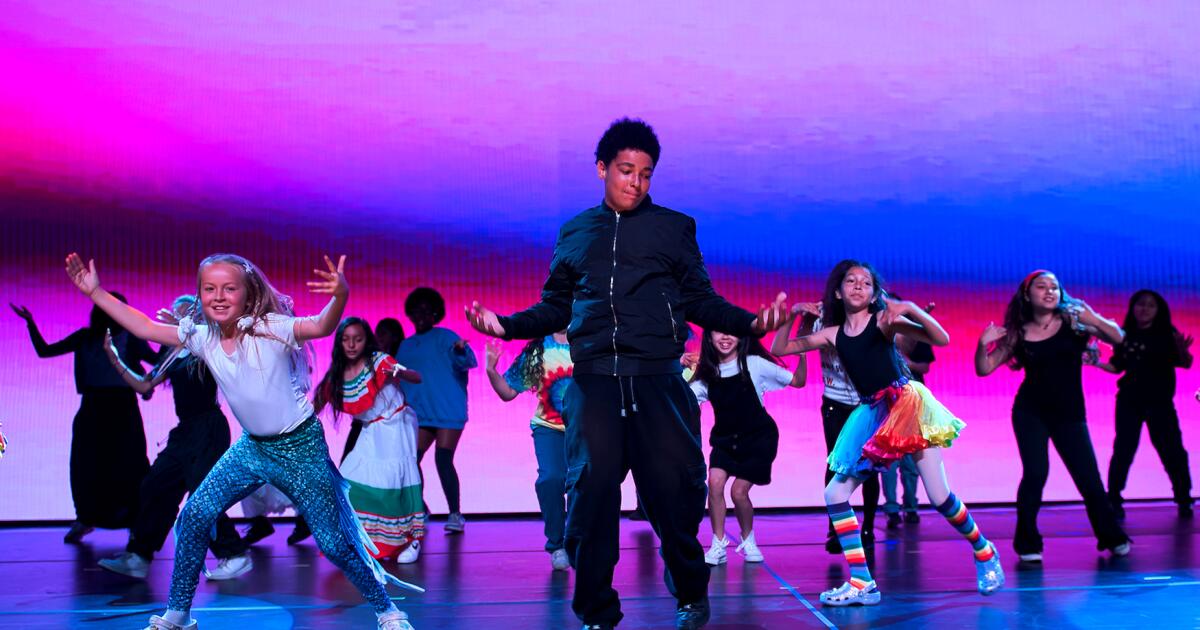Angelus Temple, a megachurch in Echo Park, was the unexpected (and largest to date) venue of choice for Gabriella Charter School’s end-of-year dance recital. On a Saturday in June, friends and family packed the three-story, 5,300-seat theater for two performances, traveling from the redwood forests and farms of California’s Central Valley all the way to the school’s home base in Los Angeles.
Narrating in English and Spanish, sixth-grader Anabel Soriano took to the stage to tell a story inspired by the play “Two Donuts” by Jose Cruz Gonzalez. A Guatemalan-American girl is unaware of the beauty of her Los Angeles neighborhood, so in her dreams she embarks on an adventure across the Golden State in search of meaning. Students explore California by blending traditional dance styles like tap, hip hop and ballet with moves made popular on TikTok and the video game “Fortnite.”
Spectators lined Glendale Boulevard for hours before the two performances. Gabriela Charter School Executive Director Rhonda Baldenegro said this is normal for the school’s annual recital, even though it’s only the second in-person performance since the COVID-19 pandemic began.
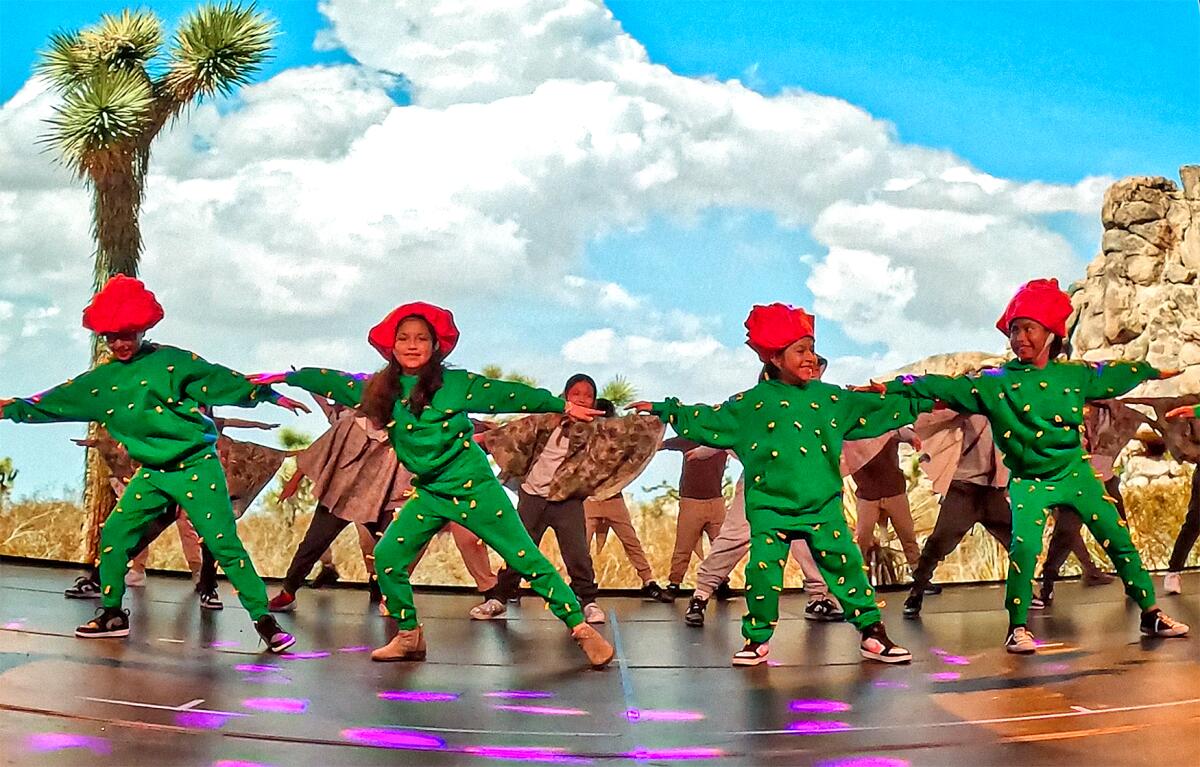
Parents handcrafted costumes for each campus’ annual recital, including cactus sweatsuits for the third-grade performance of “The Joshua Tree.”
(Heather Seybold)
The event’s popularity is a testament to Lisa Bercovici’s decades-long commitment to dance education. A former lawyer, Bercovici founded the after-school dance program for low-income communities in memory of her 13-year-old daughter, Gabriella Axelrad, who died that year after being hit by a distracted driver while riding her bike during a family trip. Gabriella was a dancer and dreamed of becoming a teacher. In 2005, the program grew into a charter school serving students from kindergarten through eighth grade. The school’s current home, the Echo Park campus, opened in 2009, and a second campus in South Los Angeles opened in 2017. Each school enrolls about 400 students.
Twenty-five years after Gabriella’s death, her legacy lives on.
“We serve a population that has been significantly impacted, and providing experiences that will enhance their lives is really, really important to me,” Bercovici said. “We made a commitment as an organization to provide arts and dance at a very high level and very frequently, which is very unusual.”
Baldenegro said GCS is one of the few public schools in the country that teaches dance multiple days a week as part of its curriculum, and for many of GCS’s low-income students, this is their only opportunity to receive formal dance training.
With their big end-of-year recital over and summer vacation fast approaching, the GCS students kept dancing. Five students will continue dancing all summer with the Summer Arts Conservatory, a theater education group at Los Angeles County High School for the Arts. Although the cost of admission is more than $1,200, the GCS students receive full scholarships.
GCS dance instructor Antavius Ellison was the catalyst that connected the school with the program.
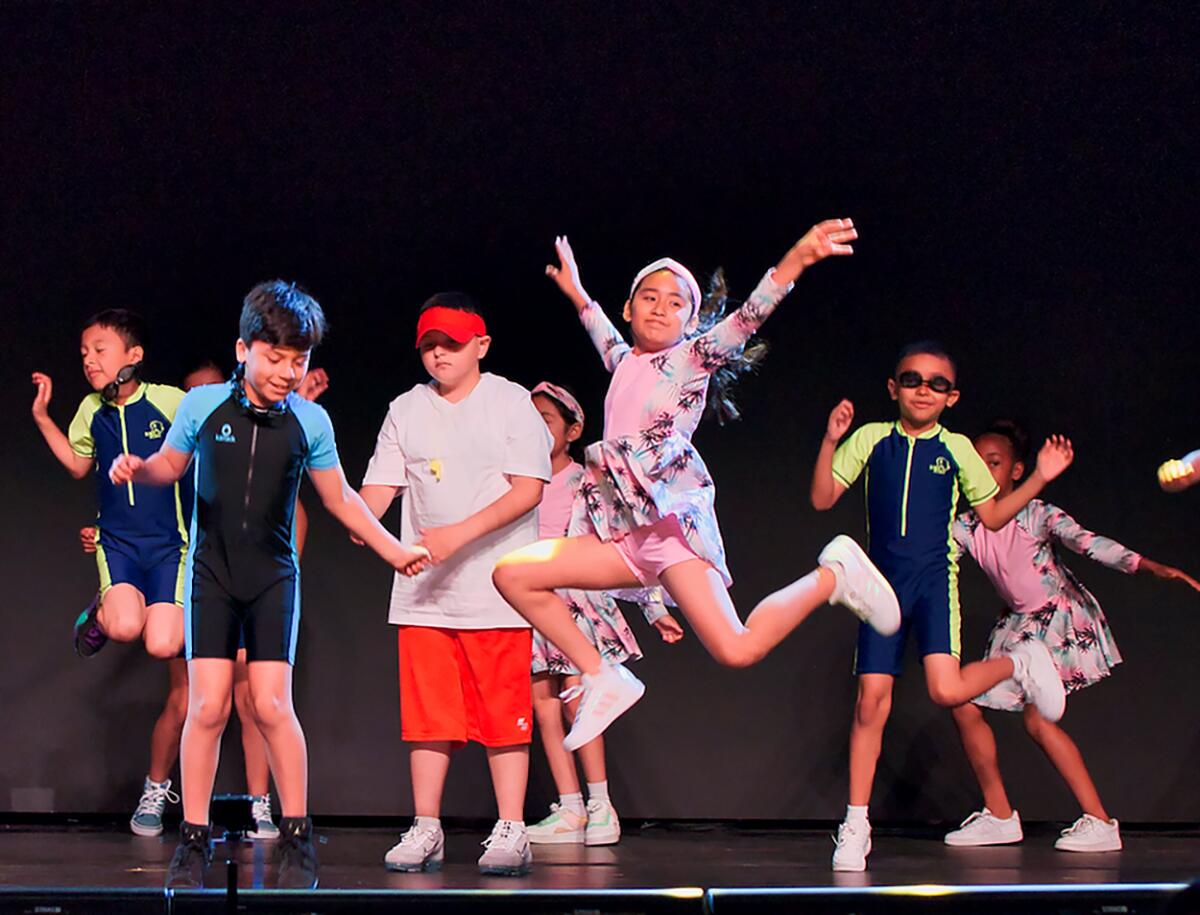
Gabriella Charter School’s “California Dreams” recital also included a third-grader “Beach” routine that depicted different regions of the state.
(Eman Mallorca)
“The more we can introduce, [students] Now, when I walk into those spaces, it’s like, “You’re doing your job. You didn’t have this opportunity when you were growing up, and now you get to give it back to other people.” [in] “In a very hopeful way,” said Ellison, a professional dancer who has appeared in music videos for SZA and Hozier, “I feel like that’s one of the purposes for me being at GCS right now. … I feel like this is a sign from God that you’re doing exactly what you need to do.”
One of the conservatory scholarship recipients is eighth-grader Madison Pinon, who Ellison handpicked for the scholarship. Ellison calls her his “little assistant/mentor.”
“When she found out, she had a smile on her face that I’d never seen before,” said Madison’s mother, Berlin Pinon.[It was] “I heard it from ear to ear that whole weekend.”
The young dancer enrolled at GCS when she was in the fifth grade – she hadn’t taken a dance class since she was eight years old. As her dancing skills improved, Madison began assisting Ellison in teaching classes for younger students at the Echo Park campus.
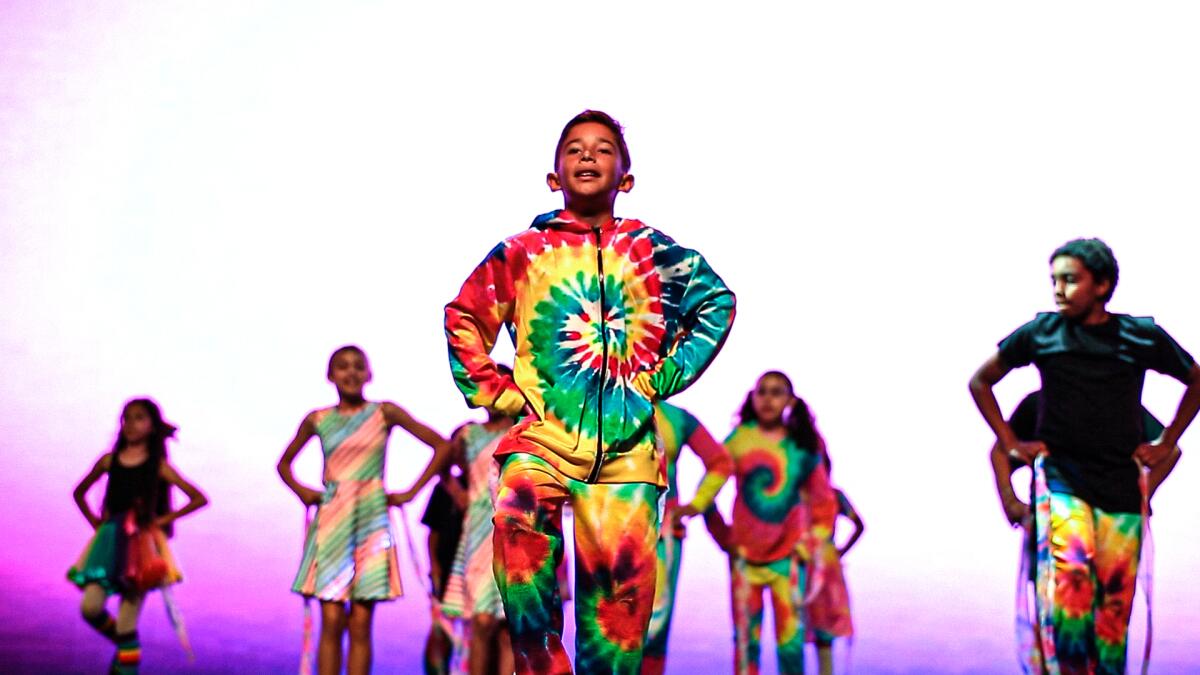
The 2024 dance recital marked the school’s second in-person performance since the COVID-19 pandemic.
(Heather Seybold)
The 13-year-old hopes to learn new styles of dance during the three-week program in July.
“In sixth grade, I realized that dance was something I could pursue and do for a living,” Madison said. “I just felt like if I believed in the fact that I could do it and believed in myself, I could probably get there.”
Fifth-grader Nathan Sandoval is one of the scholarship recipients at the South Los Angeles campus, and his mother, Nora Martinez, said she was “shocked” when she found out about the opportunity.
“I’m so happy that my son is recognized as talented,” she said. “I think the things he’s achieved on his own are amazing. [dance].”
Martinez said the 11-year-old is a natural performer and has finally shed his shyness at GCS.
“Before he goes on stage he always tells me, ‘Mom, I’m doing this for you because you support me and I know you’ll like my dancing,'” Martinez said.
The dancing didn’t stop when the COVID-19 pandemic forced schools to move to online learning. Echo Park Principal Stephanie Piazza said dance instructors filmed videos for students to watch during the spring 2020 semester. The school held recitals, but that year’s recitals were stitched together from videos of students dancing at home.
“In a lot of places, the pandemic stopped school activities. We just thought, ‘No, this is important. This is important. We’re going to find a way to do it,'” Piazza said. [2020] The performance we did was really moving because we were all feeling so alone and sad and yet we still found a way to connect.”
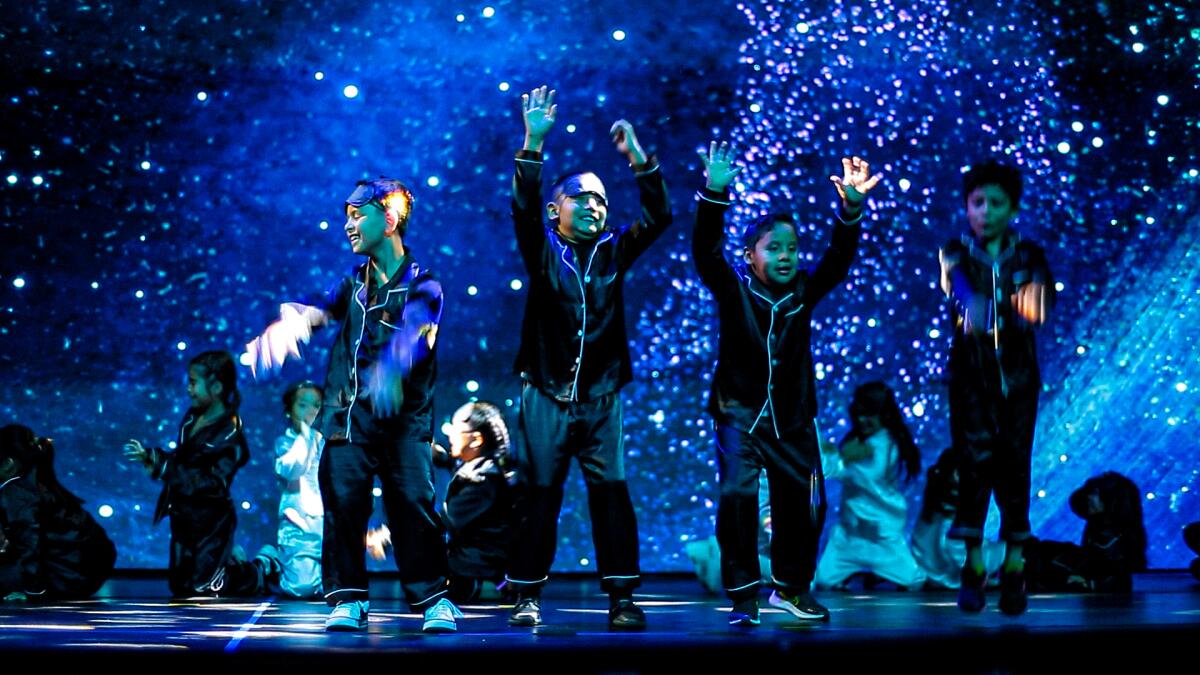
Gabriella Charter School teaches dance to students three days each week.
(Heather Seybold)
The school’s approach to dance earned it a California Pivotal Practice Award for innovation during the closures.
“What I’m really proud of is that even though budgets have been going all over the place in California, we’ve never stopped doing arts work, and that’s because our mission and vision has never wavered,” Piazza said.[Dance is] “It’s such a powerful way for kids to express themselves. … It’s really wonderful for the 4-year-olds who come to our school to have another space where they can shine.”
Dance classes have been shown to benefit students’ physical and mental health: in 2016, the Copenhagen Consensus Conference found that physical activity improves academic performance and brain function, while arts education for children has been linked to better grades and attendance.
“We truly believe in the transformative power of dance and how it can enhance children’s learning and help them become more capable, calm individuals with a better mind-body connection when it comes to learning,” Baldenegro said.
Walking through the Echo Park campus, everyone knows each other’s names, and a common theme among students, families, faculty and staff is the love for the community the school has built.
“A lot of the students at my previous school were very stuck in their own groups and weren’t very happy,” Madison says, “but here a lot of them are happy. They really find happiness through dance.”
The school’s dance classes combine traditional cardio exercises, like jumping jacks and high knees, with choreography. Students dance to hits by artists like Kali Uchis and Harry Styles. Madison choreographed and led the dance to Drake’s “Controlla” for the freshman class.
Until now, Madison has stuck to the “choreography” that she was familiar with. Since then, she says, she feels empowered to choreograph her own dances in order to “express more” through her own movement.
“I’ve seen so much growth in her, not just in her dance skills, which of course she will get with more practice, but her leadership and discipline. She’s really dedicated and has a plan for everything she does,” Berlin said. “I can see her growing into an incredible young woman.”
After class, two second-year students wanted to perform a dance they had created that included acrobatic moves.
“There’s no way we could have paid them to do that last semester,” Ellison said.
The school’s dance teacher choreographs the recital, but Ellison said he makes sure to incorporate student movement as well.
“I want to empower my students to create more because I think it helps them feel more confident in themselves,” Ellison says. “They’re holding the space in a really healthy way… They’re being given the space to trust their own innate abilities and understand that movement and creativity will always look different for everyone. To me, there’s no right or wrong way to move your body or dance.”

